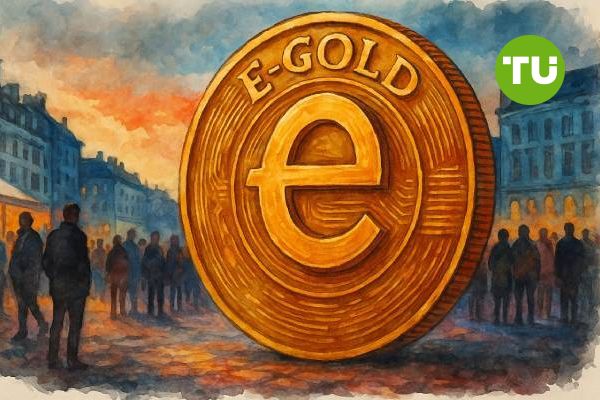E-gold: Digital currency that came before Bitcoin and disappeared forever
 E-gold — forgotten digital currency that paved Bitcoin path
E-gold — forgotten digital currency that paved Bitcoin path
Before the world had ever heard of blockchain — and before the word «Bitcoin» became a global symbol of financial independence — a form of electronic money already existed online. Back in the 1990s, this project had millions of users, processed billions of dollars in transactions, and seemed poised to become the future of finance. But it didn’t. That project was E-gold.
You may have never heard of it — it disappeared almost as quickly as it rose. While Bitcoin has already survived over 15 years of regulatory pressure, banking resistance, and geopolitical scrutiny, E-gold failed the one test that mattered most: centralization.
Why does this story still matter? Because it reminds us that being first doesn't always mean winning — and it shows where the true strength of digital money lies.
Digital gold before the crypto era
E-gold was launched in 1998 — a time when the idea of decentralized money hadn’t even entered the conversation. It was created by Douglas Jackson, an American doctor and vocal advocate of the gold standard. The model was simple: users exchanged fiat currency for “grams of electronic gold,” which were backed by actual gold held by the company Gold & Silver Reserve Inc. The physical metal was initially stored in Florida, and later moved to vaults in London and Dubai.
The platform allowed users to send these tokens to one another within the E-gold system. All transactions were instant, irreversible, and recorded in a centralized ledger maintained by the company. No identity verification was required — it was completely anonymous.
By 2006, E-gold was second only to PayPal in terms of internet-based transaction volume. The platform had over 5 million registered accounts, and processed $2 billion annually. It was nothing short of a financial revolution — but it had one major vulnerability.
Loading...
A single point of control — and a full stop in history
Everything collapsed just when it could have gone big. In 2008 — just a few months before the Bitcoin white paper appeared — a U.S. court officially ruled that E-gold was operating as an unlicensed money transmitter. The company was charged, and its founders pleaded guilty.
The core issue wasn’t the idea — it was the architecture. All assets, transactions, servers, and gold reserves were controlled by a single entity: Gold & Silver Reserve Inc. This centralization made it easy for government authorities to shut the project down.
Another major flaw was the complete lack of KYC/AML procedures. E-gold quickly became a haven for scams, illicit money flows, and money laundering. And without any legal framework or regulatory protections, the platform was vulnerable at the very start.
Loading...
Did E-gold ever stand a chance?
Yes — it did. E-gold was revolutionary for its time. But it ultimately failed because it never embraced the core principle of crypto: independence from centralized control. Its story isn't a failure — it's a prologue to the era that Bitcoin would soon ignite.
Bitcoin didn’t come out of nowhere. It learned from E-gold’s mistakes. Most importantly, it avoided centralization. Bitcoin has no single server to shut down, no company to prosecute, and no bank account to freeze — no single point of failure.
Where E-gold tried to replicate the financial system with a fresh coat of digital paint, Bitcoin set out to build an entirely new one — with entirely new rules.
E-gold proved the world was ready for digital money. Bitcoin made sure it could never be stopped.













































































































































